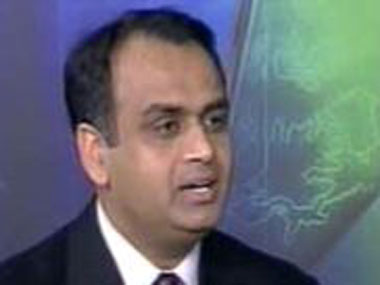Amitabh Chaturvedi, managing director and chief executive offer of Dhanlaxmi Bank, quit on Monday, following alleged differences with the bank’s board on a range of issues relating to business strategy.
Executive Director P G Jayakumar took over as the new managing director and CEO, a release from the private-sector bank said.
[caption id=“attachment_205635” align=“alignleft” width=“380” caption=“Chaturvedi took charge of the bank in 2008 after working with ICICI Bank and Reliance Capital. Photo:moneycontrol.com”]
 [/caption]
[/caption]
Chaturvedi took charge of the bank in 2008 after working with ICICI Bank and Reliance Capital. While credited with trying to turn the “old-generation” private-sector bank in a new-age institution, he was also seen as responsible for implementing a faulty business strategy that sent the bank’s costs soaring as it focused on aggressive growth.
Media reports said Chaturvedi’s exit is likely to be followed by other exits at the top level. According to a Moneycontrol report , Sandeep Wirkhare, head of retail assets credit and policy, also quit a fortnight ago, apparently to pursue his own business initiatives.
Four reasons seem to be behind Chaturvedi’s resignation.
One, Chaturvedi seemed to have placed too much emphasis on growth, which did not sit well with other members of the board. According to a Mint report , one bank executive described Chaturvedi as a “growth junkie” who spent a lot of money hiring people and expanding the branch network, but failed to show results in income growth.
“Chaturvedi saw this (spending money hiring people and branch expansions) as investment, but it was taking time to pay off,” the unnamed executive said.
In his way, Chaturvedi tried to turn the 85-year-old South-India-headquartered bank into an all-India player: according to Business Standard, between December 2008 and June 2011, the bank’s loans expanded by a staggering 229 percent , even as it hired 3,000 employees, taking its total headcount to more than 4,000 in roughly around the same period.
Impact Shorts
More ShortsTwo, costs seemed to be spiralling ahead of income growth under Chaturvedi’s tenure, which apparently made the board very uncomfortable. During Chaturvedi’s tenure, the wage bill jumped to around Rs 250 crore by March 2011 from less than Rs 62 crore in March 2009.
Apparently, there was also some heartburn among some long-serving senior executives that new recruits at the top level were being paid much higher salaries and perks that were out of sync with the volume of business generated.
As the Mint report noted, several of the bank’s efficiency parameters started to decline. Return on assets fell to 0.23 percent from 1.21 percent between March 2009 and September 2011, while its capital adequacy ratio dropped to 10.81 percent from 14.44 percent in March 2009.
The cost-income ratio, which indicates how much cost is incurred to earn one unit of income, also deteriorated over the bank’s aggressive expansion. By March 2011, the ratio was a high 83 percent, according to this Moneylife report. The bank also seemed to be suffering from some liquidity problems.
Three, the bank has been dogged by controversies since last September, mainly over its asset quality and allegations from one bank union – All India Bank Officers’ Confederation – that the bank was “fudging its accounts” to show “inflated” profits,in a story broken by Moneylife.
The allegations prompted the Reserve Bank of India to inspect the bank’s books in November and issue a plan of action that directed the bank to moderate its loan growth and improve its cost-efficiency ratio. It also asked the bank to maintain a higher capital adequacy ratio than the mandatory 9 percent.
Still, the central bank went ahead and cleared the proposal to extend Chaturvedi’s term for another three years until October 2014. It was an approval that probably did little to bolster the confidence of the board in Chaturvedi, who became the public face of the bank when the controversies erupted.
Four, given the deteriorating financial situation of the bank - and the controversies - the board seems to have lost faith in Chaturvedi’s business strategy and what he planned for the bank in future. While the bank posted a Rs 4.3 crore net profit in the September-ended quarter last year, most experts believe it will post a loss of nearly Rs 30 crore in the December quarter. The bank announces its results on 14 February.
In the end, the differences between Chaturvedi and other board members over how to manage the bank grew so wide that he (Chaturvedi) was left with no option but to leave.
)